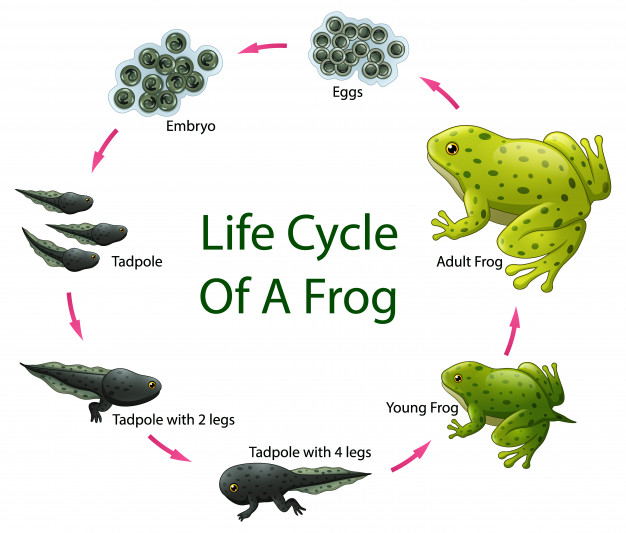Objective of the chapter: Reproduction in Animals - Class 4
You will learn:
- what is the importance of reproduction
- how animals reproduce
- about metamorphosis in some animals
Reproduction in Animals - Class 4
Do you know why animals reproduce?
As the time goes by all the living things grow, become old and then die. The stages in the life of a living thing form its life cycle.
All living things produce young ones like themselves due to which life on Earth can continue.
Animals reproduce in different ways - Lions, tigers, monkeys and humans give birth to babies. Whereas, birds, frogs, snakes, and lizards lay eggs from which babies hatch.
Let's learn more about animals that give birth to babies.
Animals That Give Birth To Babies
Animals like lion, tiger, horse, cows and humans give birth to babies. The babies are formed inside the body of the mother, where they stay for many weeks or months before being born.
When the babies are born, they are weak and helpless. They are not even able to walk. The mothers take care of their babies and feed them with their own milk. Such animals that feed their babies with their own milk are called mammals.
Animals That Lay Eggs
There are some animals that lay eggs. For example, birds, lizards, frogs, snakes and insects lay eggs.
Let us see how babies hatch from eggs and become adults.
Birds
Birds build nests to lay eggs. The female bird lays the eggs in the nest.
In the centre of the egg is a yellow portion called the yolk. At its top is the developing baby called the embryo. The yolk also contains food for the embryo.
Surrounding the yolk is a white portion called the albumen. It protects the embryo and provides water and protein to it.

The structure of hen's egg
After the eggs are laid, one of the parent birds, usually the mother, sits on them to keep them warm. This is called incubation. The baby birds start growing inside the eggs. After a few weeks, when the baby birds are fully developed, they break open the shell and come out. The parent birds feed and protect the young birds until they can look after themselves.

Life cycle of a chicken
Frogs
Frogs also lay eggs. A female frog can lay hundreds of eggs at a time. They lay eggs in a lake or a pond.
Tadpoles hatch out of these eggs. Initially they look like fish and swim in the water. After a few weeks, the tadpoles start to grow legs. Their tails become shorter and shorter and finally disappear. Over time, the tadpoles change into adult frogs.
The process by which some animals like frog go through several stages to become an adult is called metamorphosis.

Life cycle of a frog
Insects
All insects lay eggs. Many of them go through several stages before they become adults.
Cockroaches pass through three stages in their life cycle. The baby cockroach that hatches out from an egg looks like the adult cockroach except that it does not have wings. It is called a nymph. It sheds its skin several times and changes into an adult.
The shedding of old skin is called moulting.

Life cycle of a cockroach
Grasshoppers, locusts and termites also go through these three stages.
Butterflies and moths go through four stages in their life cycle before becoming adults. The female butterfly lay eggs in groups, often on the underside of a leaf. The eggs hatch into young ones called larvae. They look like worms. The larva of a butterfly is called a caterpillar.
The caterpillar eats leaves and grows quickly. It then forms a shell called a chrysalis around its body. This stage is called the pupal stage.
Inside the chrysalis, the caterpillar slowly changes shape. An adult butterfly finally comes out of the chrysalis.

Life cycle of a butterfly
Other Egg-laying Animals
Fishes lay eggs in water. They lay thousands of eggs at a time. Baby fishes hatch out of the eggs. But many of the eggs and baby fishes are eaten by other fishes.
Snakes lay eggs in soil or in holes in the ground. Turtles bury their eggs in the sand.
Crocodiles dig shallow pits in sandy riverbanks to lay their eggs. The mother covers the eggs with sand and guards them. When the babies hatch, the mother digs them out. Sometimes, she carries them in her mouth or on her back.
